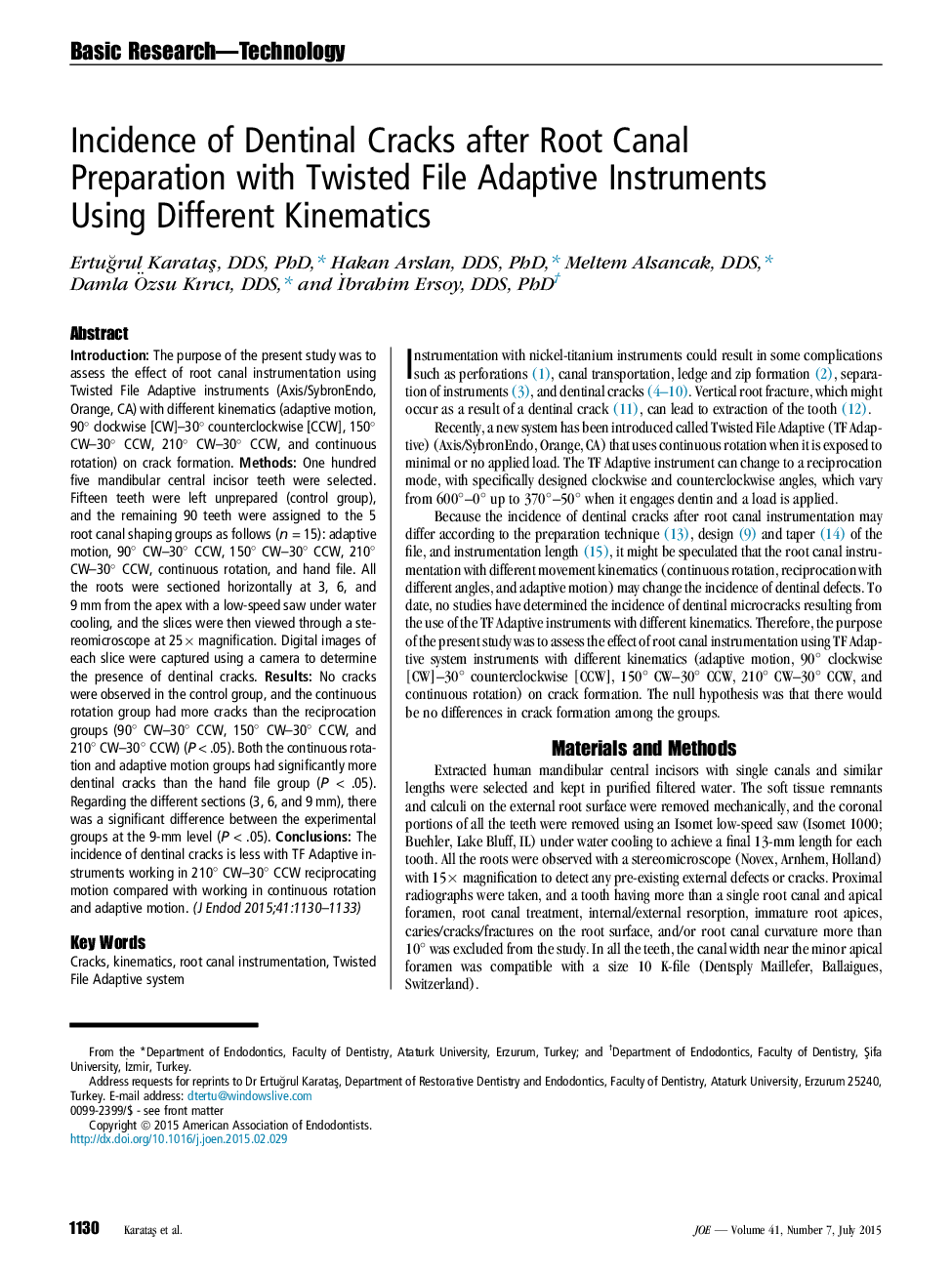| Article ID | Journal | Published Year | Pages | File Type |
|---|---|---|---|---|
| 3147475 | Journal of Endodontics | 2015 | 4 Pages |
•We evaluated the incidence of dentinal cracks after root canal instrumentation with different movement kinematics (adaptive motion, reciprocation with different angles, and continuous rotation).•The effect of the movement kinematics on the dentinal crack formation has not been reported before.•The incidence of dentinal cracks is less with Twisted File Adaptive instruments working in 210° CW–30° CCW reciprocating motion compared with working in continuous rotation and adaptive motion.
IntroductionThe purpose of the present study was to assess the effect of root canal instrumentation using Twisted File Adaptive instruments (Axis/SybronEndo, Orange, CA) with different kinematics (adaptive motion, 90° clockwise [CW]–30° counterclockwise [CCW], 150° CW–30° CCW, 210° CW–30° CCW, and continuous rotation) on crack formation.MethodsOne hundred five mandibular central incisor teeth were selected. Fifteen teeth were left unprepared (control group), and the remaining 90 teeth were assigned to the 5 root canal shaping groups as follows (n = 15): adaptive motion, 90° CW–30° CCW, 150° CW–30° CCW, 210° CW–30° CCW, continuous rotation, and hand file. All the roots were sectioned horizontally at 3, 6, and 9 mm from the apex with a low-speed saw under water cooling, and the slices were then viewed through a stereomicroscope at 25× magnification. Digital images of each slice were captured using a camera to determine the presence of dentinal cracks.ResultsNo cracks were observed in the control group, and the continuous rotation group had more cracks than the reciprocation groups (90° CW–30° CCW, 150° CW–30° CCW, and 210° CW–30° CCW) (P < .05). Both the continuous rotation and adaptive motion groups had significantly more dentinal cracks than the hand file group (P < .05). Regarding the different sections (3, 6, and 9 mm), there was a significant difference between the experimental groups at the 9-mm level (P < .05).ConclusionsThe incidence of dentinal cracks is less with TF Adaptive instruments working in 210° CW–30° CCW reciprocating motion compared with working in continuous rotation and adaptive motion.
